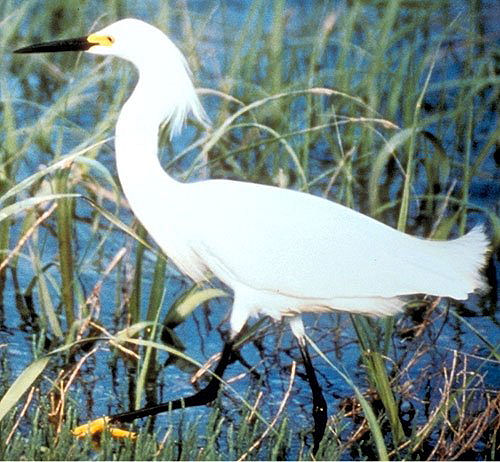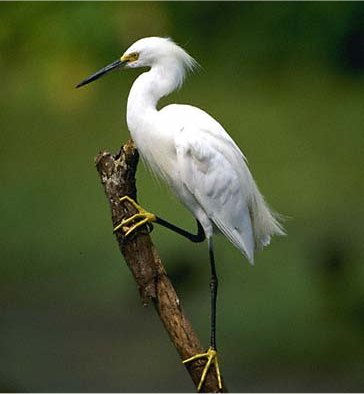Long-legged Waders
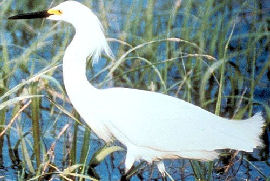 |
Snowy Egret
Egretta thula |
Description
20-27" (51-69 cm). W. 3'2" (97 cm). A
small, delicate white heron with a slender black bill, black legs,
and yellow feet. In breeding season, it has long lacy plumes on its
head, neck, and back. Immature bird similar to adult, but lacks
plumes and has yellow stripe up back of leg. Adult Cattle Egret has
pale bill, legs, and feet; immature has dark bill, legs, and feet.
Much larger Great Egret has yellow bill and black legs and feet.
Similar to immature of less common Little Blue Heron, but that
species has a stouter, bluish-gray bill, greenish-yellow legs and
feet, no yellow skin between eyes and base of bill.
HabitatMarshes, ponds, swamps, and
mudflats. |
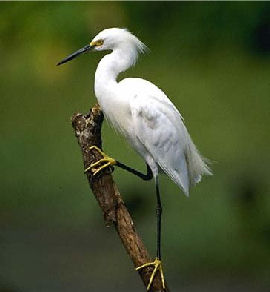 |
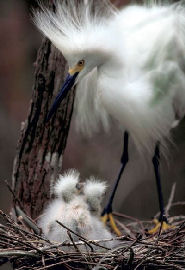 |
Nesting3-5 pale blue-green eggs placed on a
platform of sticks in a bush or reedbed or on the ground. Nests in
colonies, often with other species of herons.
Range
Breeds locally from Oregon and California
east to New England, mainly along coasts but also at scattered
localities inland. Winters regularly from California, Arizona, and
Virginia south to West Indies and South America. Also resident in
tropical America.
VoiceA harsh squawk. |
Discussion
These delicate, agile birds often feed
by sprinting rapidly through shallow water, chasing schools of
minnows and shrimp. This habit makes them easy to identify without
seeing their bills and feet. Often several Snowies will be found
feeding together, and it is thought that their white color, visible
at great distances, lets other birds know where the feeding is good;
the sprinting behavior also attracts other birds that then join in
the feast. There is evidence that members of a pair of Snowy Egrets,
like other large waders, cannot recognize one another except at the
nest. Even there, a bird arriving to relieve its mate must perform
an elaborate greeting ceremony in order to avoid being attacked as
an intruder. During this display the plumes on the head are raised
and the incoming bird bows to the one that is sitting. Appeased by
this display, the sitting bird leaves and the other takes
over.




